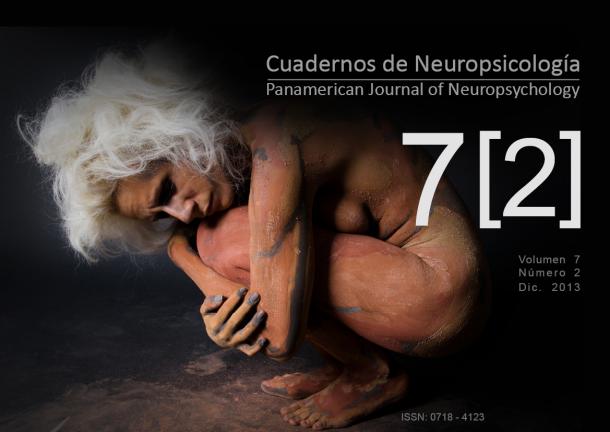Invariancia de Medidas de la prueba de figuras del Test de Pensamiento Creativo de Torrance según la edad: Un estudio en niños y adolescentes de habla hispana
Abstract
Resumen
En base a un estudio previo que indica que el constructo creatividad operacionalizado con el Test de Pensamiento Creativo de Torrance (TTCT) de Figuras está compuesto por dos factores –Innovación y Adaptación– en niños de habla hispana (Krumm, Lemos & Arán Filippetti, en prensa), el objetivo de este trabajo fue comprobar si esta estructura es invariante según la edad de los sujetos. Se trabajó con una muestra de 652 niños y adolescentes de 9 a 17 años de ambos sexos de habla hispana divididos en tres grupos: (a) 9-10 años, (b) 11-13 años y (c) 16-17 años. El Análisis Factorial Confirmatorio (AFC) mostró que la estructura del TTCT está integrada por dos factores correlacionados, Innovación y Adaptación en las tres muestras de estudio. Además, los resultados del AFC multigrupo revelaron que la estructura de dos factores es invariante (configural y métrica) a través del edad, lo que significa que los niños y adolescentes conceptualizan el constructo Creatividad de la misma manera. Finalmente, el análisis multivariado de varianza (MANOVA) reveló un efecto significativo de la edad en todas las subescalas. Estos datos muestran la importancia de la edad como un factor a tener en cuenta en el estudio del potencial creativo a través del TTCT-Figuras.
Palabras claves : Medidas de invariancia; Edad; Test de Pensamiento Creativo de Torrance; TTCT-Figuras; Creatividad.
Abstract
On the basis of a previous study carried out with Spanish-speaking children which indicates that the Creativity construct, operationalized by means of the Torrance Tests of Creative Thinking (TTCT)-Figural, consists of two factors –Innovation and Adaptation– (Krumm, Lemos & Arán Filippetti, in press), the objective of the present work was to prove whether this structure is invariant across age. A sample of 652 Spanish-speaking children and adolescents aged 9-17 years of both sexes was tested. It was in turn divided into three age groups: (a) 9-10, (b) 11-13 and (c) 16 -17 years. Confirmatory Factor Analysis (CFA) showed that in each group of the sample, the structure of the TTCT is composed of two correlated factors, namely Innovation and Adaptation. In addition, Multigroup CFA demonstrated that the two-factor solution was actually invariant (configural and metric) across age, meaning that children and adolescents equally conceptualize the Creativity construct. Finally, MANOVA showed a significant age effect on every subscale. These data suggest the relevance of considering the age factor when assessing the creative potential through the TTCT-Figural.
Keywords: Measurement Invariance; Age; Torrance Tests of Creative Thinking; TTCT-Figuras; Creativity
Downloads
Published
How to Cite
Issue
Section
License
Articles published in this journal are protected under the Creative Commons Attribution-NonCommercial-ShareAlike 4.0 International (CC BY-NC-SA 4.0) license. This means that authors retain full rights over their research and publications at all times. As a journal, we fully respect and promote the principles of open access established by this license, allowing the work to be shared, adapted, and distributed for non-commercial purposes, provided that appropriate credit is given to the authors and any derivative works are licensed under the same terms.
Authors are responsible for obtaining the required permission when they wish to reproduce part of the material (figures, etc.) from other publications.
Likewise, CNPs allows authors to host in their personal sites or other repositories that they deem convenient the Final and Definitive Version of the published article with the format assigned by the journal. In no case do we allow access to preprints of the article under evaluation or already published.
When submitting an article to CNPs you are aware that all the contents of CNPs are under a Creative Commons License. In which it is allowed to copy and share the contents freely, always making reference to the origin of the publication and its author.





